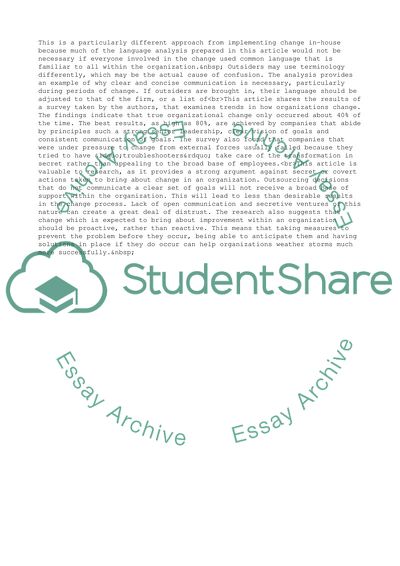Cite this document
(“Organizational Change Management, Change, Talk and Sensemaking Annotated Bibliography”, n.d.)
Organizational Change Management, Change, Talk and Sensemaking Annotated Bibliography. Retrieved from https://studentshare.org/management/1739974-revision-annotated-bibliography
Organizational Change Management, Change, Talk and Sensemaking Annotated Bibliography. Retrieved from https://studentshare.org/management/1739974-revision-annotated-bibliography
(Organizational Change Management, Change, Talk and Sensemaking Annotated Bibliography)
Organizational Change Management, Change, Talk and Sensemaking Annotated Bibliography. https://studentshare.org/management/1739974-revision-annotated-bibliography.
Organizational Change Management, Change, Talk and Sensemaking Annotated Bibliography. https://studentshare.org/management/1739974-revision-annotated-bibliography.
“Organizational Change Management, Change, Talk and Sensemaking Annotated Bibliography”, n.d. https://studentshare.org/management/1739974-revision-annotated-bibliography.


